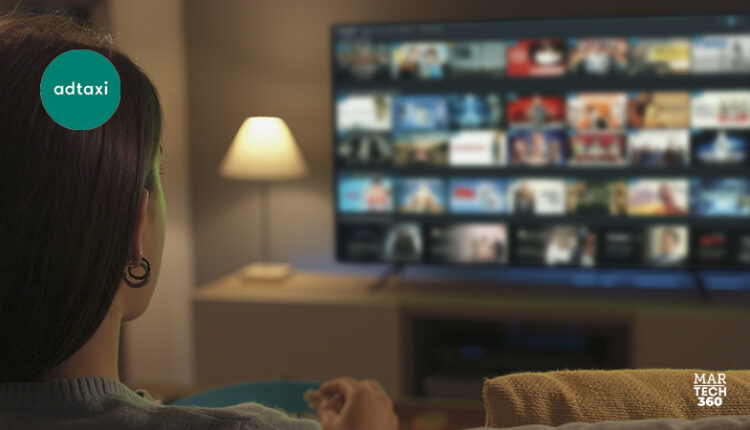STREAMING TV: NAVIGATING THE NEW MAINSTREAM
In an era marked by digital evolution, the shift towards streaming TV has become a defining movement, signaling not just a change in consumer habits but a cultural revolution within the entertainment industry. Recent findings from Adtaxi’s 2024 Streaming TV Survey, coupled with insights from Nielsen’s “The Gauge” and data from eMarketer, paint a vivid picture of a landscape where streaming TV is not just an option but the primary choice for a growing majority of viewers.
A Cultural Shift Towards Streaming
Adtaxi’s survey reveals a staggering 73% of Americans now prefer streaming services, turning first to a streaming service over traditional broadcast and cable TV when turning on their television sets. This preference spans all demographics, underscoring a universal shift towards a digital-first lifestyle. The evolution is not merely about the convenience of on-demand viewing; it represents a broader lifestyle change where digital media has become the norm.
According to Nielsen Media, a leader in viewing measurement, streaming TV overtook both broadcast and cable for the first time in July 2022, capturing a significant share of TV set viewership. By December 2023, streaming TV had solidified its lead, commanding an average 36% share of viewing, compared to 28% for cable and 24% for broadcast. This marked increase from 32.8% in the previous year underscores the accelerating shift toward streaming as the dominant mode of television consumption.
YouTube stands out as the colossus within the streaming sector, owning the top share with 24% of all streaming—or 8.5% of total TV set viewing. This statistic is not just a testament to YouTube’s vast library of content and accessibility but also highlights the platform’s unique position at the intersection of user-generated content and traditional media.
Also Read: What Do Brands Need to Know About Generative AI for Audio and CTV Marketing?
Stepping Away from the TV Set
In the rapidly evolving digital landscape, the emergence of laptops and tablets as preferred streaming devices for one-third of TV streamers underscores a significant shift towards a balanced, multiscreen lifestyle. This trend highlights the demand for devices that marry convenience and immersive viewing experiences and signals a broader transition in consumer behavior, embracing flexibility across various contexts. With the average streamer now engaging with content across 2.25 different devices, the era of being tethered to a single screen is fading into obsolescence. This evolution reflects a nuanced, dynamic approach to media consumption, where the versatility of laptops and tablets enables a seamless transition from productivity to leisure, catering to the modern viewer’s craving for content accessibility and variety, regardless of their physical setting.
A Digital Epoch Unfolds
Between 2021 and 2023, an unmistakable trend showed U.S. adults are dedicating 33 more minutes daily to digital media. And eMarketer forecasts for time spent with digital to pass 8 hours a day in 2025 have just been revised to show that milestone occurring this year.
In stark contrast, traditional media platforms – linear TV, radio, and others – are witnessing a gradual retreat in daily engagement. From a 5-hour daily average in 2021 to 4 hours and 37 minutes in 2023, this shift, though seemingly modest, marks a decisive move towards digital alternatives. Predictions for 2025 indicate a further decline to 4 hours and 18 minutes daily, underscoring a persistent trend away from traditional formats.
The Future of Television
The move towards streaming is “more than a technological evolution; it’s a cultural revolution.” This transition signifies a shift in our relationship with entertainment, with streaming TV now the new mainstream.
The future of television, as envisioned by current trends, is one of diversity, personalization, and innovation. The industry must remain flexible and innovative, using technology to forge meaningful connections with audiences.
The Streaming Mainstream
The universal appeal of streaming TV across generations and income levels is undeniable. Data shows an impressive increase in adults streaming TV shows and movies, with significant growth observed across all key demographics. This universality challenges traditional notions of technology adoption, particularly among older age groups, and underscores the user-friendly nature of streaming platforms.
Streaming’s growing popularity comes down to its ease of use, affordability, choice, and the fact that it’s easy to get. It offers a personalized watch experience for everyone, moving beyond the usual boundaries of age, income, or gender. Marketers must now adapt to this surge in streaming as it becomes essential, not optional. An overwhelming 73% of Americans now prefer streaming over traditional TV, signaling a vast move to a digital entertainment world.
Marketers must learn from this shift. They need to tailor their methods for an online, multi-screen world, use data to craft content that speaks to people, and harness platforms blending user-made and professional content, like YouTube. Streaming isn’t just a new trend; it’s the primary way we consume media now, and it offers fresh, exciting ways to reach and resonate with viewers. As digital overtakes old-school media, marketers must stay nimble, crafting strategies that are as dynamic and progressive as the audiences they hope to attract.


Comments are closed.